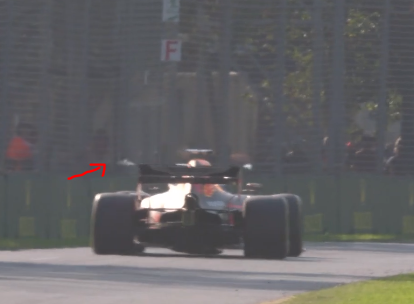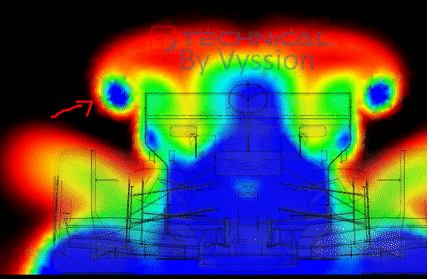I entered Formula One when 2 manufacturers were on board: Bridgestone and Michellin. Of course, being 13 years old by the time I was absolutely clueless on how tyres work, blistering, deformation, compounds, etc. When Indianapolis 2005 fiasco came in, I only knew Michellin didn’t have enough supplies to let teams run the race and so only 6 cars ran that sunday.
Now, this year I am trying to understand more and more of the sport and couple of weeks ago I was puzzled by the tyres. I know aerodynamically wheels are a big question mark and understanding them is a separate whole new world, even in CFD. However, if so in the future I will be trying to cover this aspect, now I want to focus on the sport and the choice of tyres itself. Shanghai is coming along and some time back, they compounds available for the race became known to the public. Then, when do they release the info? How do teams choose? which tyres go on qualy, which go on race? how many sets and how weather conditions affect the choice of tyres? I’d like to uncloud myself and write down useful clarifications.
Slick tyres are around since 2009 and Michellin, Bridgestone withdrew from F1 by 2010 (Michellin did it by 2007) Pirelli was then picked as the sole tyre supplier. 4 dry compounds were distinguished by colors: Hard-Silver, Medium-White, Soft-Yellow, Super soft-Red; followed by a Intermediate-Blue and Wet-Orange. All drivers making it to Q3 should keep their set of tyres used in Q3 lap to the start of the race.
2016: Drivers get 13 set of tyres each. 2 of those are allocated for the race, 1 set only for Q3. Compounds now are 5 for dry conditions adding the purple Ultrasoft. Pirelli as until now (2019 season) makes 3 of those compounds available prior each race. How they choose them? Will be covered below. Each driver can pick their own combination for the rest 10 sets of tyres as long as they choose from the pool of the 3 compounds Pirelli announced as available. Choices should be places 8 weeks before each european race and 14 weeks before other around-the-world races. When does Pirelli announces their pool? 9 weeks prior euro races, 15 weeks prior non-euro races. That means drivers get 1 week to choose since they get to know the compounds available.
The only set allocated for Q3 will be the softest compound available. The other 2 sets for the race are chosen by Pirelli and at least one must be used. Drivers who make it to Q3 should return the set they used in the qualifying session and start the race with the compound that gave them the fastest lap in Q2.
How do drivers then allocate their own tyres? The rest of the 10 sets will be used for the whole weekend. 3 Free Practices, 3 Qualifying sessions and the race. So when a driver finishes using one set, it cannot be reused and tyres will be returned at specific times.
-One set at 40min of FP1
-One set at the end of FP1
-Two sets at the end of FP2
-Two sets at the end of FP3
This leaves with 4 sets of tyres (driver’s choice), 1 set for Q3, 2 sets for race (Pirelli’s choice, at least one to be used), all those for Q1, Q2, Q3 and the race itself. The Q3 set is tricky, if the driver goes into Q3, he must use it and THEN return it, starting the race with the compound that gave him the fastest lap in Q2; however drivers not making it to Q3 can start the race with whichever compound they want, even the Q3 set that is now available.
In case of rain: drivers don’t have to use any of the mandatory race dry tyres. If race starts on a wet track, top 10 drivers don’t need to start with their Q2 set.
2018: Same as 2016 but now the range of compounds is wider. Hypersoft, ultrasoft, supersoft, soft, medium, hard, superhard. Yeah, right. Each still with its own color. Also, the 3 compounds chosen are not necessarily adjacent and one level can be skipped. Meaning “Ultrasoft-supersoft- medium” is a valid choice.
2019: Back to 5 compounds and only 3 colors per race. White is hard, yellow is medium and soft is red. Compounds are named from C1 to C5, C5 is the softest. Wet intermediate is green and evacuates 30L of water per second at 300kph. Full wet blue tyres evacuate 65L of water per second at full speed.

Now, how does Pirelli choose the compounds? Mostly the track demands and the environment (weather) are the main factors. If a circuit has a lot of high speed turns more energy will go to the tyres. The tyres (less pressed against the asphalt) because downforce will be tuned to be less to not compromise drag will gain more temperature easily, therefore harder tyres would be better.
If the circuit has a lot of straights, straights usually allow tyres to cool down, a softer compound could be needed. If the circuit has close turns or corners, less energy will go into the tyres, more grip is needed so a softer compound will be preferred.
As for the asphalt, Pirelli would look on the roughness of the track. If there is a lot of stones in the mixture of asphalt, that means the track is very grippy but damaging more the tyres. A new track or asphalt is always pointy and not even, making it more aggresive, it has more oils in the surface making it more sensitive to temperature changes and if conditions are hot the oils resurface making it more slippery. An old track is much more slick meaning there is not much grip. On the other hand, microroughness is analyzed by looking at the texture of the asphalt itself and matching it to the direct contact element: the rubber of tyre.
As for the weather, it is good to know if it’s going to rain or not (obviously), if it’s too hot or cold, if it’s dusty or sandy, if it’s a straight circuit, the time of the day at which the race will be held.
A trick then:
-Slow corners – Soft tyres
-Low tyre energy – Soft tyres
-Slow average speed – Soft tyres
-Temporary city track (is more worn) – Soft tyres
-Abrasive surface – Hard tyres
-Heavy braking – Hard tyres
-Medium/fast corners – Hard tyres
-High tyre energy – Hard tyres
-High temperatures – Hard tyres
With all this info, track and tyres for Shanghai:

If I learned this right…2 high speed straights, slow corners with a medium fast section, it looks more of a soft compound choice
😦 Pirelli chose a more medium approach compared to 2018 with Ultras-Soft and Mediums


Mid field looks safe and similar on proportion of tyre sets, however in the front runners there is a subtle play. Hamilton and Leclerc with only one set of hardest compound, I’d imagine the risk of having only one set of hards for a dominant straight circuit as China’s is high.
And that’s the entry for today!



